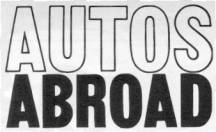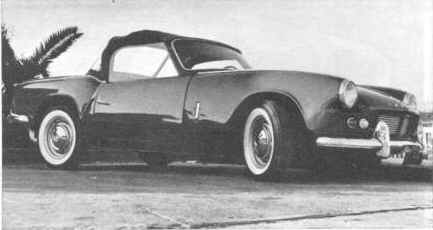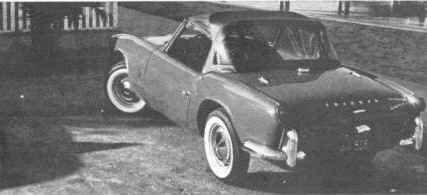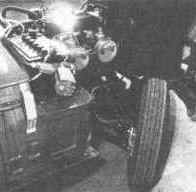
TAKE THE
GROWING popularity of the 1-liter (61.0-cu. in.) sports cars, toss in an
interesting small car engine and chassis, top off with a dash of Italian
styling and mix well. The result is Standard-Triumph's Spitfire 4, latest
of the tiny (145-in. overall length) tea-baggers to arrive on these
shores.
Its
appearance had been expected since Triumph unveiled the Herald coupe, with
a backbone-type frame and all-independent suspension that caught the eye
of ihe sports car set. British Motor Corp. already had budget-sized buzz
bombs on the market in the form of Austin-Healey Sprites and MG Midgets
(some 11,000 of which were sold in this country last year).
For
the TR-4's baby brother, Triumph has shortened the Herald wheelbase 8.5
in., to 83.5 in. Front and rear suspensions have been only mildly
modified. The 4-cyl. Herald engine, with two SU carburetors and 9.1
compression ratio, now produces 63 bhp at 5750 rpm for the Spitfire. The
over-head valve powerplant has a 2.73-in. bore and 2.99-in. stroke for
70-cu. in. displacement.
The
all-welded steel body, styled by Giovanni Michelotti, is bolted to the
chassis at 12 mounting points. Two longitudinal box section frame rafts,
running close together in the center and flaring outward toward each end
to carry engine and suspension components, form the backbone-type chassis
for the body.
The entire hood and front fender as- sembly pivots forward from hinges at the front of the frame rails, providing complete access to the engine and
|
|
front
suspension components. Because of the low hood line, the radiator header
tank is detached and mounted beside the valve cover.
Doors
are fairly wide (34 in.) for a car of this size and have roll-up windows.
Also generous, for this size car, is the trunk, which measures 46 x 20 x
14.5 in. A vertical fuel tank, capped by a large-diameter, racing-type
snap-lid, is mounted between the trunk and passenger compartment.
Provision is made for a small child, a small dog, or a week's supply of
groceries behind the bucket seats for driver and passenger.
A
4-speed transmission, synchronized on the top three gears, takes the drive
from a 6.25-in. single dry plate clutch. Final drive ratio is 4.1 1: 1,
which produces 15.7 mph per 1000 rpm and a top speed just over 90 mph.
The
somewhat stubby gearshift lever angles back from its tunnel mounting next
to a bulkhead that both braces the cowl and serves as an auxiliary
instrument panel. One of the last of the fly-off handbrake levers (press
the button to lock, but just tug slightly to release) is mounted on the
tunnel side between the seats.
A
16-in., 2-spoke steering wheel is adjustable for reach and is installed on
a collapsible (in a crash) steering shaft
that has a 2-position choice in mounting height. Full lock to full lock is
reached in 3.7 turns of the rack and pinion steering and the car needs
only 24 ft. street width for a U-turn.
Unequal
length wishbones, connected by an anti-roll bar, and angled coil spring
and shock absorber assemblies are used for the front suspension. The
independent rear suspension uses a leaf spring bolted transversely across
the differential, which is fastened to a cross brace on the chassis.
Exposed half-shafts carry the drive over the frame rails to the wheels,
which are additionally located by radius rods running from body points
just behind the seats. The hydraulic brakes have 9-in. discs in front,
7-in. drums at the rear.
Of special importance in the American market are the sturdy bumpers with large bumper guards installed as standard equipment. Standard instrumentation includes tachometer, speedometer, fuel gauge and temperature gauge. For racing, removal of three bolts will detach the windshield; the first Spitfire to appear at a West Coast road race, less than a week after its arrival at dockside, ran a strong third until forced to retire and then only because of hasty preparation.


